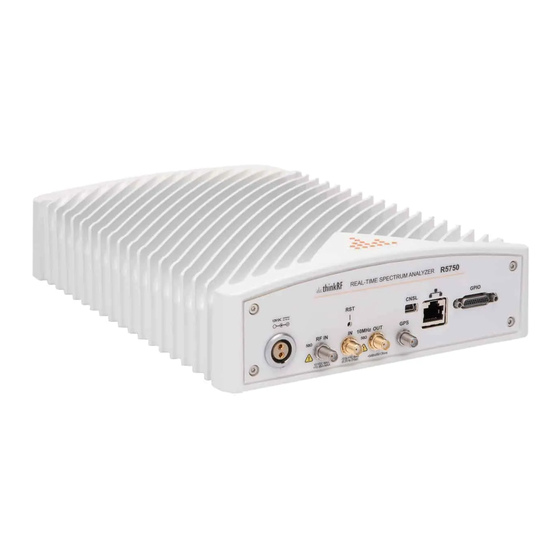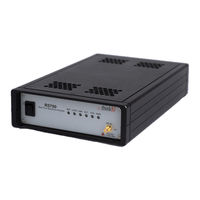
ThinkRF R5750 Manuals
Manuals and User Guides for ThinkRF R5750. We have 3 ThinkRF R5750 manuals available for free PDF download: Programmer's Manual, User Manual
ThinkRF R5750 Programmer's Manual (112 pages)
Real-Time Spectrum Analyzer with GNSS
Brand: ThinkRF
|
Category: Measuring Instruments
|
Size: 1 MB
Table of Contents
-
Preface10
-
Audience10
-
Conventions10
-
Triggers21
-
Purpose27
-
Gain30
-
Bandwidth32
-
Table 34: {I39
-
Table 36: {I40
-
Cls44
-
Ese/*Ese44
-
Esr45
-
Idn45
-
Opc/*Opc45
-
Rst45
-
Sre/*Sre46
-
Stb46
-
Tst46
-
Wai47
-
System:abort47
-
System:flush54
-
System:date57
-
System:time57
-
Input:gain65
-
Input:mode66
-
Gnss:adelay73
-
Trigger:type76
-
Format80
-
Notation97
-
Output Queue101
-
Level106
-
References110
Advertisement
ThinkRF R5750 Programmer's Manual (107 pages)
Real-Time Spectrum Analyzer
with GNSS
with GNSS
Brand: ThinkRF
|
Category: Measuring Instruments
|
Size: 1 MB
Table of Contents
-
Preface10
-
-
-
Purpose26
-
-
-
Gain29
-
Temperature29
-
-
Bandwidth31
-
-
-
Table 36: {I39
-
-
-
-
-
System:abort46
-
System:flush52
-
System:date55
-
System:time56
-
-
-
-
-
Trigger:type73
-
-
-
-
-
-
Notation93
-
References106
ThinkRF R5750 User Manual (41 pages)
Real-Time Spectrum Analyzer with GNSS
Brand: ThinkRF
|
Category: Measuring Instruments
|
Size: 1 MB
Table of Contents
-
Preface
5
Advertisement
Advertisement


